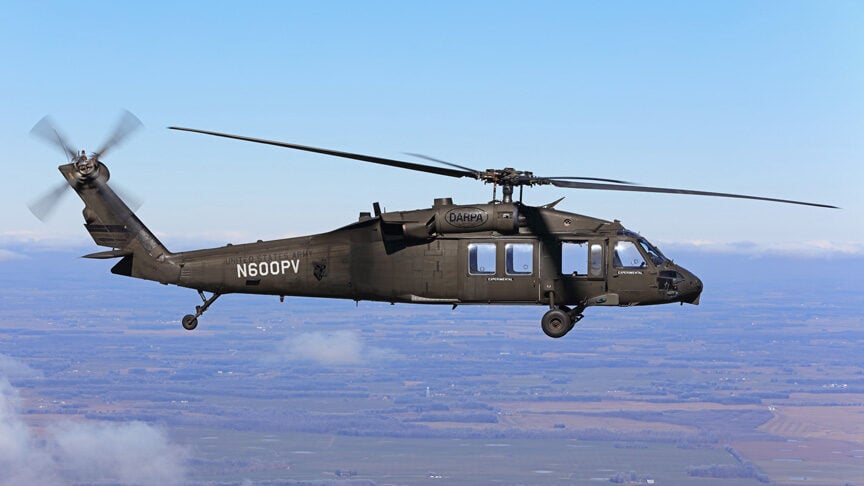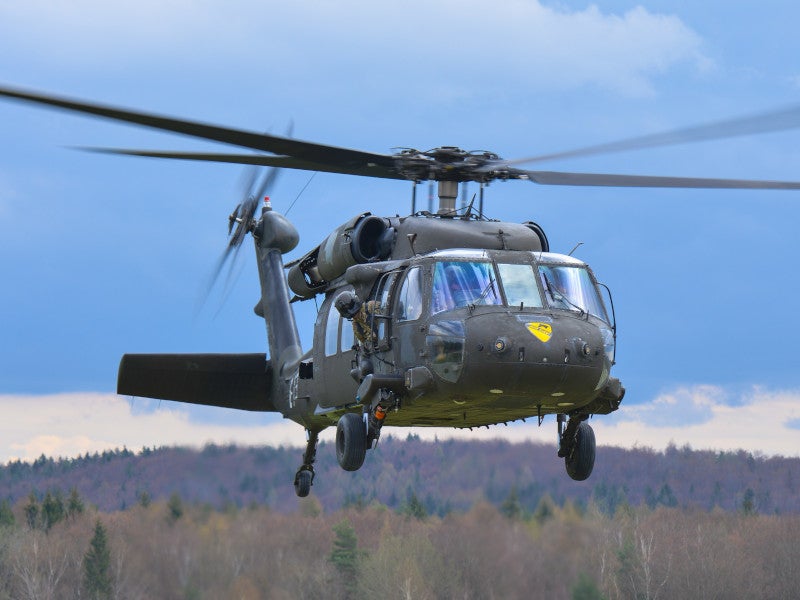The UH-60 Helicopter: Browsing Via Its History, Layout, and Substantial Duty in Air Travel
The UH-60 helicopter, frequently referred to as the Black Hawk, stands as a testimony to the innovations in aviation technology and its obvious influence on both armed forces and noncombatant operations. From its modest beginnings to its current condition as a sign of reliability and versatility, the evolution of the UH-60 has actually been noted by continual innovation and adjustment to fulfill the evolving needs of the air travel sector. As we explore its history, design complexities, and the critical role it plays in different industries, a deeper appreciation for this renowned helicopter emerges, dropping light on the substantial payments it has actually made to the realm of aeronautics.
Development of the UH-60 Helicopter

The advancement of the UH-60 helicopter can be mapped back to the demand for a flexible and reputable utility aircraft that could fulfill the demanding requirements of modern-day military procedures. Created by Sikorsky Aircraft, the UH-60 Black Hawk first flew in 1974, with the U.S. Army becoming its primary operator. For many years, the UH-60 has gone through a number of upgrades and variants to improve its capabilities and performance.

Style Advancements and Attributes

Moreover, the UH-60 includes an innovative avionics collection that consists of advanced navigating systems, communication equipment, and electronic display screens. These technical developments improve situational understanding for the team, enhancing general goal efficiency and security. The helicopter's roomy cabin design facilitates quick and very easy loading and dumping of soldiers, tools, and casualties, making it a flexible possession for army procedures and calamity relief efforts.
Additionally, the consolidation of composite products in essential architectural components reduces weight while maintaining resilience, enhancing the UH-60's efficiency and fuel effectiveness. The UH-60 helicopter's ingenious design elements collectively contribute to its reputation as a highly qualified and trusted airplane in both military and civilian aeronautics sectors.
Armed Forces and Private Applications
With versatile capacities suited for a series of operational needs, the UH-60 helicopter offers both noncombatant and army industries successfully (uh-60). In army applications, the UH-60, frequently recognized as the Black Hawk, read here plays an important role in troop transportation, clinical evacuation, battle assistance, and search and rescue goals. Its speed, capability, and agility to operate in numerous settings make it a useful possession for armed forces operations worldwide. The UH-60's advanced avionics, defensive systems, and adaptability have actually strengthened its placement as a foundation of armed forces helicopter fleets.
Furthermore, the UH-60's flexibility for VIP transport and offshore procedures even more highlight its value in noncombatant applications. Whether in army or noncombatant usage, the UH-60 helicopter continues to show its worth as a flexible and vital airborne system.
Influence on Aeronautics Workflow
Having developed its value in civilian and military applications, the UH-60 helicopter's effect on air travel procedures extends beyond its flexible abilities to influence a vast range of aerial missions. In armed forces settings, the UH-60 plays an essential duty in army transportation, rescue and search procedures, medical emptying, and special procedures support.
Additionally, the UH-60's integrity and endurance make it a preferred choice for utility goals, consisting of transportation of freight and personnel to remote locations. Generally, the UH-60 helicopter substantially impacts air travel operations by providing unrivaled capacities and support throughout a broad spectrum of goals.
Future Developments and Prospects
The development of the UH-60 helicopter is poised to revolutionize aviation capabilities and improve operational paradigms in the coming years. Innovations in modern technology and layout are driving the growth of next-generation UH-60 versions that guarantee enhanced speed, objective, and agility versatility.
Moreover, there is a growing focus on sustainability and gas effectiveness in the design of future UH-60 helicopters (uh-60). Makers are exploring new products, propulsion systems, and wind resistant improvements to reduce environmental influence and operating prices. These improvements not only benefit the setting however likewise contribute to the long-term practicality and competitiveness of the UH-60 in the swiftly progressing aviation industry
Conclusion

The UH-60 helicopter, frequently referred to as the Black Hawk, stands as a testament to the developments in aeronautics modern technology browse around these guys and its undeniable influence on both military and noncombatant operations.Having developed its relevance in civilian and military applications, the UH-60 helicopter's effect on aviation operations prolongs past its functional abilities to influence a wide range of aerial goals. In general, the UH-60 helicopter significantly influences air travel operations by giving unmatched abilities and support across a wide range of objectives.
The development of the UH-60 helicopter is poised to reinvent aviation capacities and improve operational paradigms in the coming years. As modern technology continues to advancement, the future advancements and leads for the UH-60 helicopter stay appealing, ensuring its ongoing significance in the field of aeronautics.